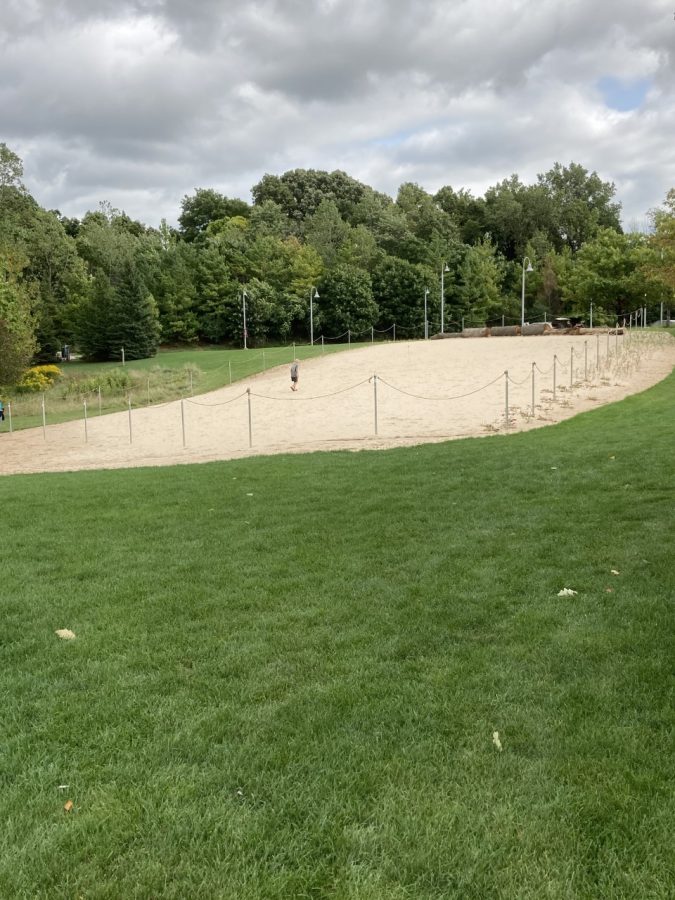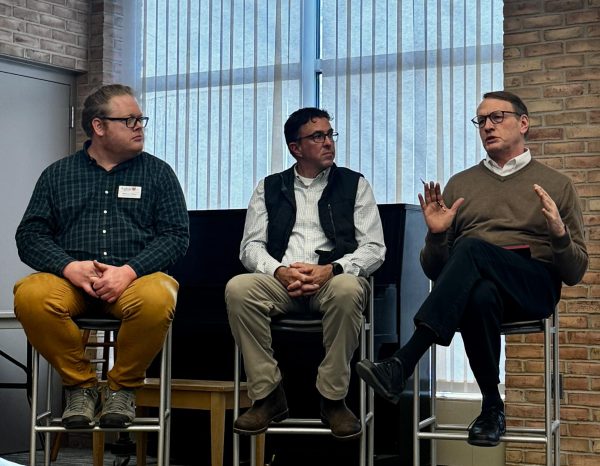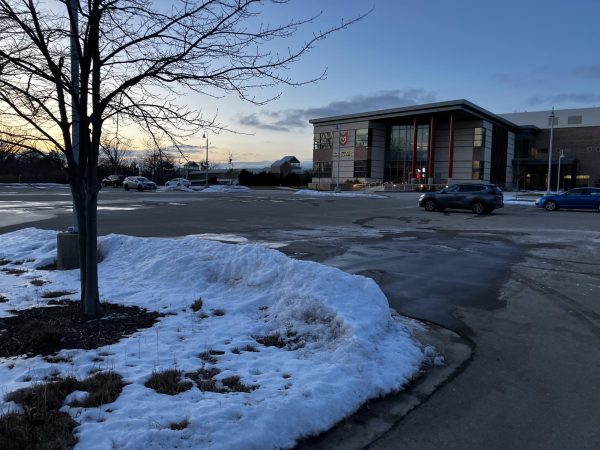Dune good: New dune provides research opportunities
Students and community member enjoy Calvin’s new dune, dubbed “Perseverance”
COVID-19 has quite literally upended Calvin’s landscape. At the beginning of August, Calvin installed its very own sand dune to the east of the Prince Conference Center.
Since its inception, the dune–dubbed “Perseverance” in honor of NASA’s most recent Mars rover–has attracted lots of attention; students and children alike have enjoyed building sandcastles at its base. Yet the dune serves a more important purpose: it’s an outdoor lab for Calvin’s Geology, Geography, and Environmental Studies department.
The dune was the brainchild of geography professor Deanna van Dijk. Van Dijk teaches the First Year Research in Earth Sciences course, which under normal circumstances involves hauling first-year students and upperclassmen mentors to the shores of Lake Michigan in 12-passenger vans. She quickly realized that it would be difficult to safely transport first-year students with the Covid-19 restrictions.
“It was pretty simple: I needed a way to bring students to the dune. I also needed a way for online students to complete coursework and research on the dune. Bringing the dune to us solved both those problems. All we have to do is walk across the Beltline, and students who are online for a few weeks can complete their fieldwork when they are able,” van Dijk said.
Van Dijk received a grant from NASA that allowed for the purchase and construction of the dune. It has an area of about 9,000 sq. feet and is an average of 18 inches thick, with 630 tons of sand.
“This semester certainly isn’t what we expected, but there are lots of great things still happening,” van Dijk said. “The dune is really a symbol of that.”
Students will be researching if Calvin’s dune demonstrates characteristics similar to those of the real dunes on lake Michigan. Students can measure, for instance, how wind and plants affect the movement of the sand on the dune. Calvin’s dune is a more controlled experimental environment than the Lake Michigan dunes, which provides students with ample opportunities to conduct research.
For example, windstorms in the second week of September resulted in sand from the dune blowing into the Prince Conference Center parking lot. Van Dijk’s students placed logs along the top of the dune to see if they could prevent the sand from leaving the dune.
“On the real dunes, trees often do fall along the top of the dune, which keeps the sand from blowing away,” van Dijk explained. After inclement weather events, students will be able to study sand movement to determine if logs have a similar effect on Calvin’s dune.
Protecting the perseverance dune from vandalism is also important. The most significant intruders, however, haven’t been people–there have been significant numbers of deer crossing the dune.
“We’ve seen quite a few deer tracks the past few weeks,” van Dijk said. “It’s actually not different from the Lake Michigan dunes. Often, there are deer that cross the dunes on the lakeshore. We’re seeing that here, too.”
Natalie Vregevoog, a junior film and geography major, is a student mentor for the FYRES course. She recognized that the dune offers unique research opportunities that aren’t possible on the real Lake Michigan dunes.
“We can look at situations we wouldn’t otherwise be able to see or manipulate. Because it’s a more controlled environment, there are more experiments that we are able to do.”
Vregevoog also called attention to the fact that it’s important to respect the dune environment.
“It’s fine to be on the part of the dune that is outside the fence. But our research really will depend on people respecting the dune and not walking inside the fenced-in research area.”
Although Calvin’s dune is similar in many ways to those on the lakefront, it’s still different. “When people see our dune, they’re surprised by how small it is in comparison to the Lake Michigan dunes,” van Dijk noted. “I hope that this project encourages people to appreciate the natural beauty of our world.”
“You don’t have to go to the lakeshore to enjoy nature–although it’s certainly encouraged,” van Dijk said. “We also want to encourage students to appreciate the beauty and wonderfulness of nature, right on Calvin’s campus.”







